by Walt Anderson
Throughout our grasslands, oak woodlands, and pinyon-juniper stands in Arizona, New Mexico, and northern Mexico grows Nolina microcarpa, commonly known as beargrass, sacahuista, or palmilla. “Beargrass” is an unfortunate name, as it is not a grass at all, nor is it related to the mountain plant called “beargrass” (Xerophyllum tenax). I prefer to call it simply nolina, a lovely name, though the Aztecderived name, sacahuista, is lovely too. It is impressively drought-tolerant, fire-resilient, and evergreen, so it makes a wonderful ornamental plant in our xeriscaped gardens. I deplore the common local practice of mass-grading (flattening everything natural), followed by planting of water-thirsty plants like globe willows, roses, or lawn turf. Why not use native plants that are beautiful, require little care, benefit useful insects and birds, and remind us of the grasslands that our developers destroyed?

I enjoy seeing nolina in nature, but it obviously also is a prime candidate for a yard ornamental, way better than the grasses it outwardly resembles. Its rosette of narrow, serrated leaves can spread to 6foot diameter, and its flower stalks can be as much as 8 feet tall.
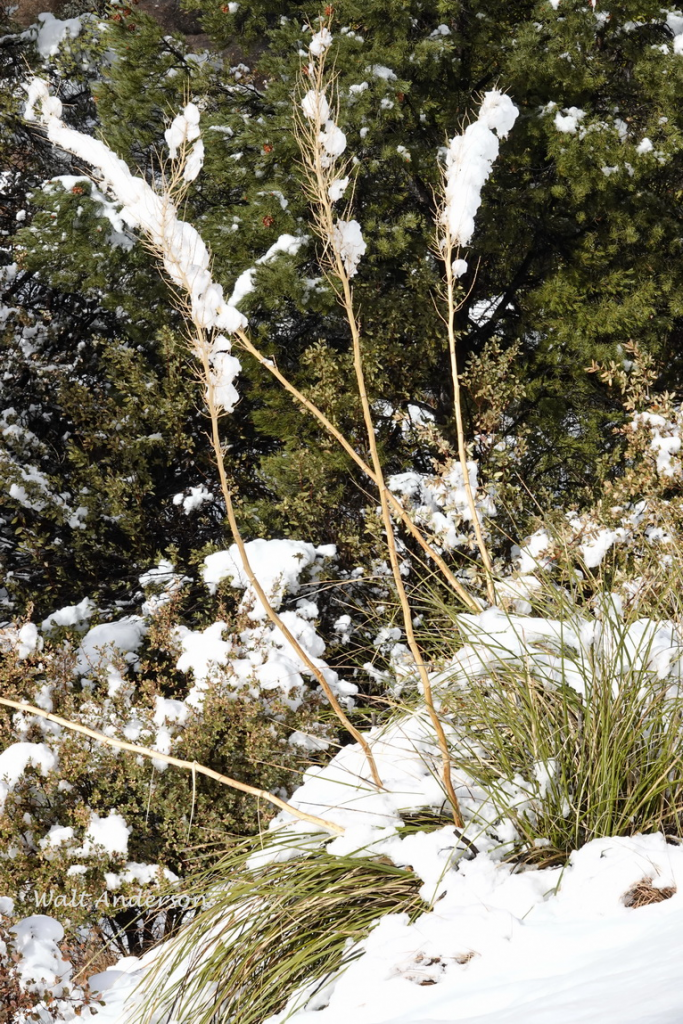
Nolina stays green all year, and a little snow on its dried stalks simply adds to its attractiveness.

Nolina can make do with shallow, rocky soils, such as we find in the rugged Granite Dells. In Arizona, it occurs from about 2700 – 6500 feet, typically in plains or desert grasslands, pinyon-juniper stands, or oak woodlands. It thrives in open sun, but it can grow under shade-making plants at times. It often provides some of the densest cover for small birds and mammals.
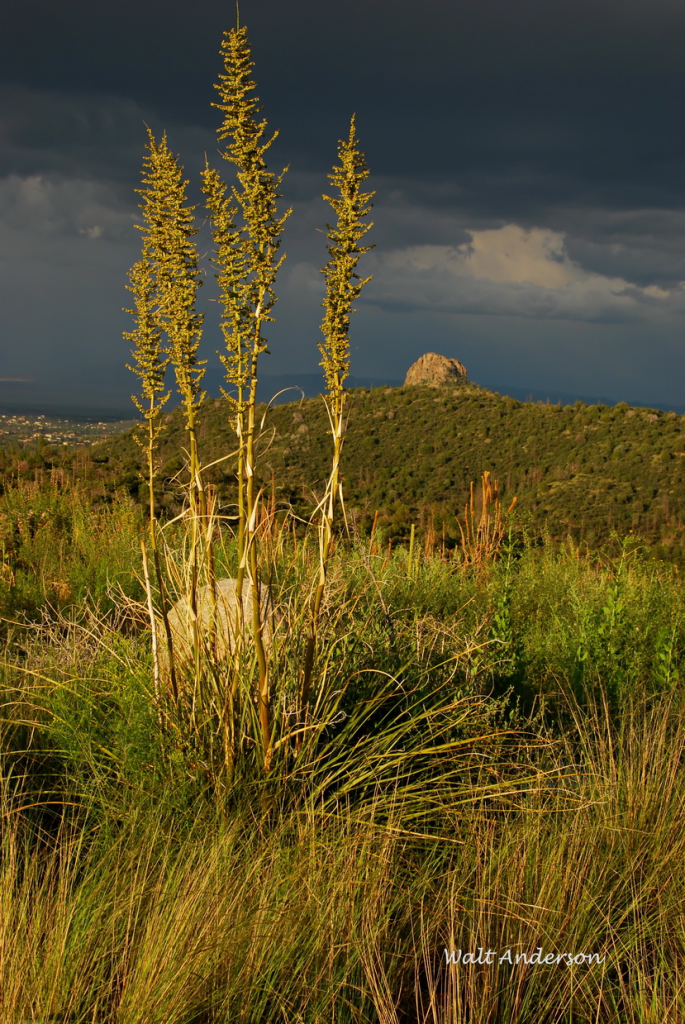
Here in sight of Thumb Butte and Prescott, this individual is thriving where a wildfire blasted through a year or two before. The leaves are highly flammable and can increase the severity of a fire where they are common. However, the underground caudex, an expanded stem, readily sends up new shoots, so while nolina is definitely not fire-resistant, it is fire-resilient.
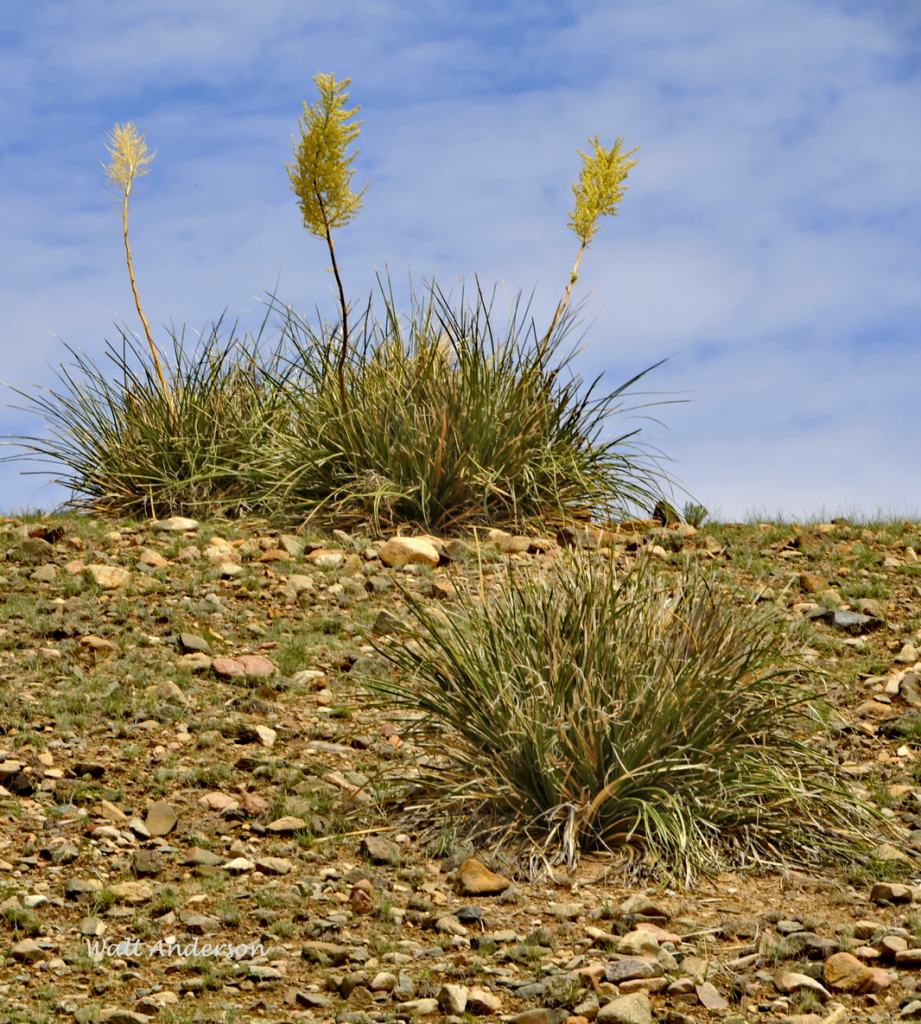
Nolina is resistant to grazing. It is poisonous to sheep and goats, and cattle dislike it, though on an overgrazed range like this one in Prescott, desperate cattle will munch on it. In Mexico, where the plant is harvested for brooms and other products, cattle will eat the new growth after the older, drier leaves have been removed. Deer find it palatable, and rodents and birds relish the seeds.
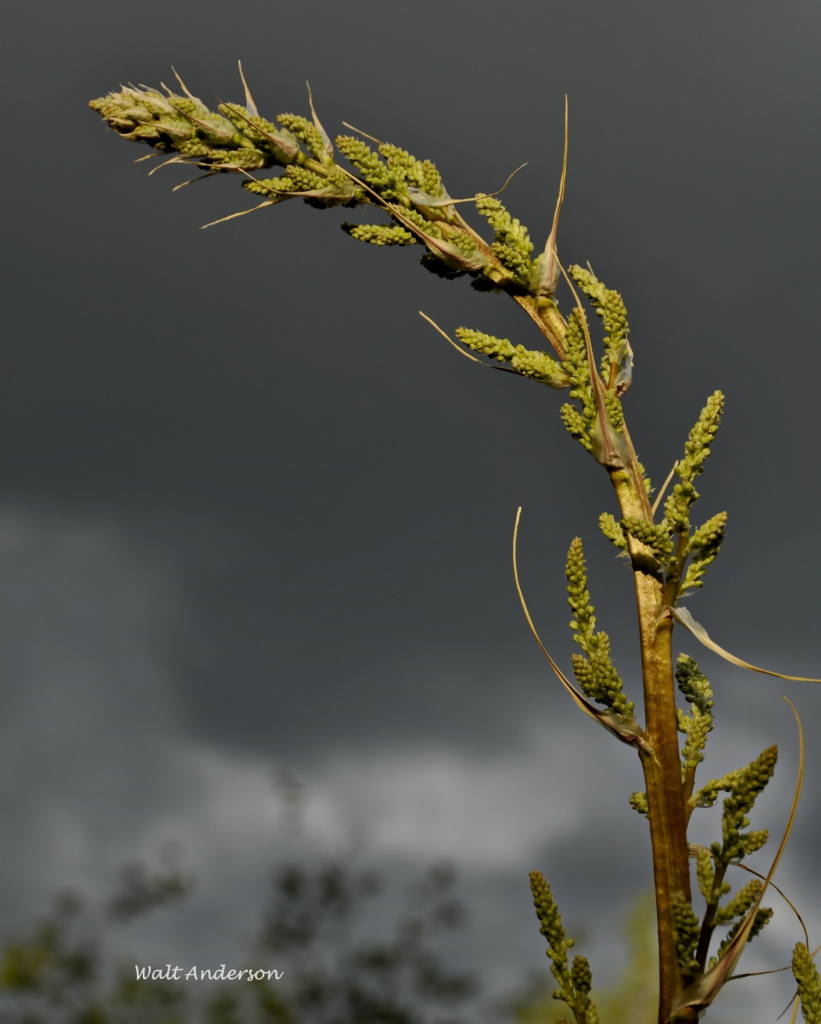
May and June bring a dramatic transformation to the dense rosettes of long, narrow leaves. Flower stalks grow quickly skyward, just as they do when yucca or agave bloom. In fact, these three are in the same family, Asparagaceae. The resemblance to the flower stalk of asparagus is obvious once you think about it. The inflorescences of flowers grow from the axils of slender, dry bracts, as you see here.

Backlighting highlights those bracts as the panicles of tiny flowers expand. The daily changes are worth watching—very dramatic!
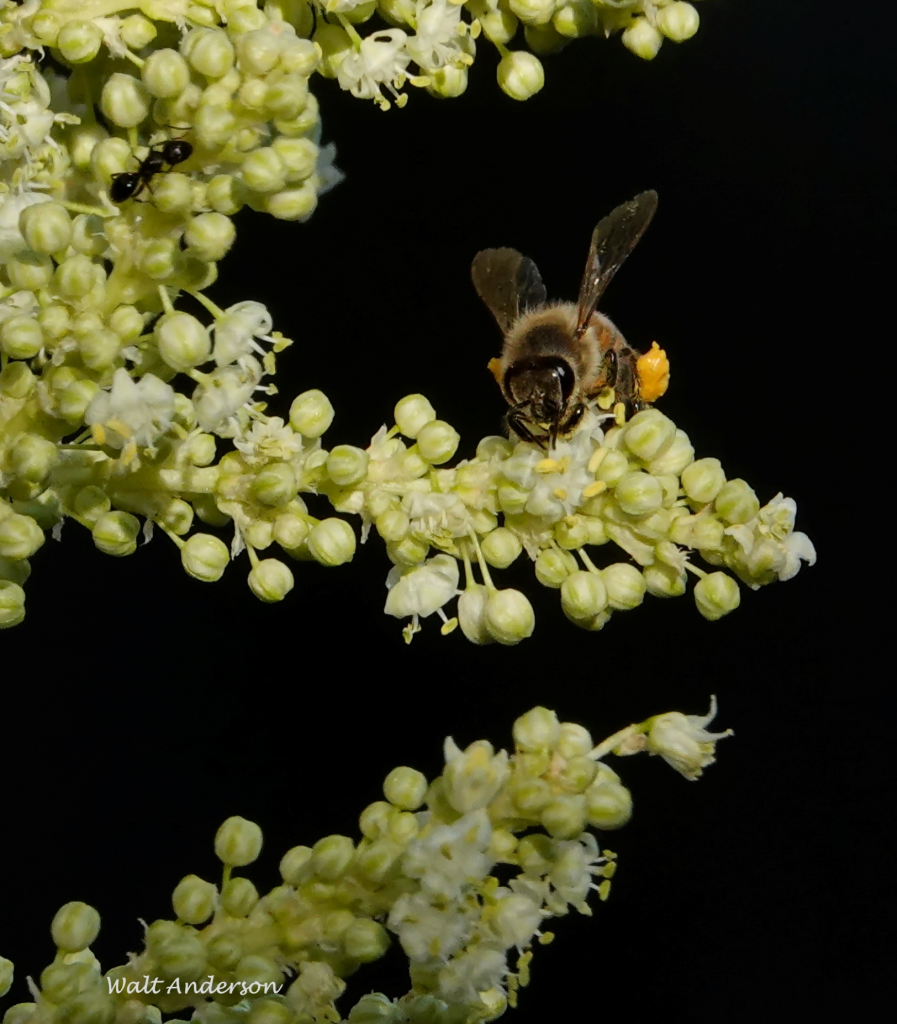
Nolina flowers are entomophilous—that is, they “love insects,” which disperse their pollen. Well, the honeybee is a good pollinator, while the ant is more of a nectar thief. Look at those pollen saddlebags!
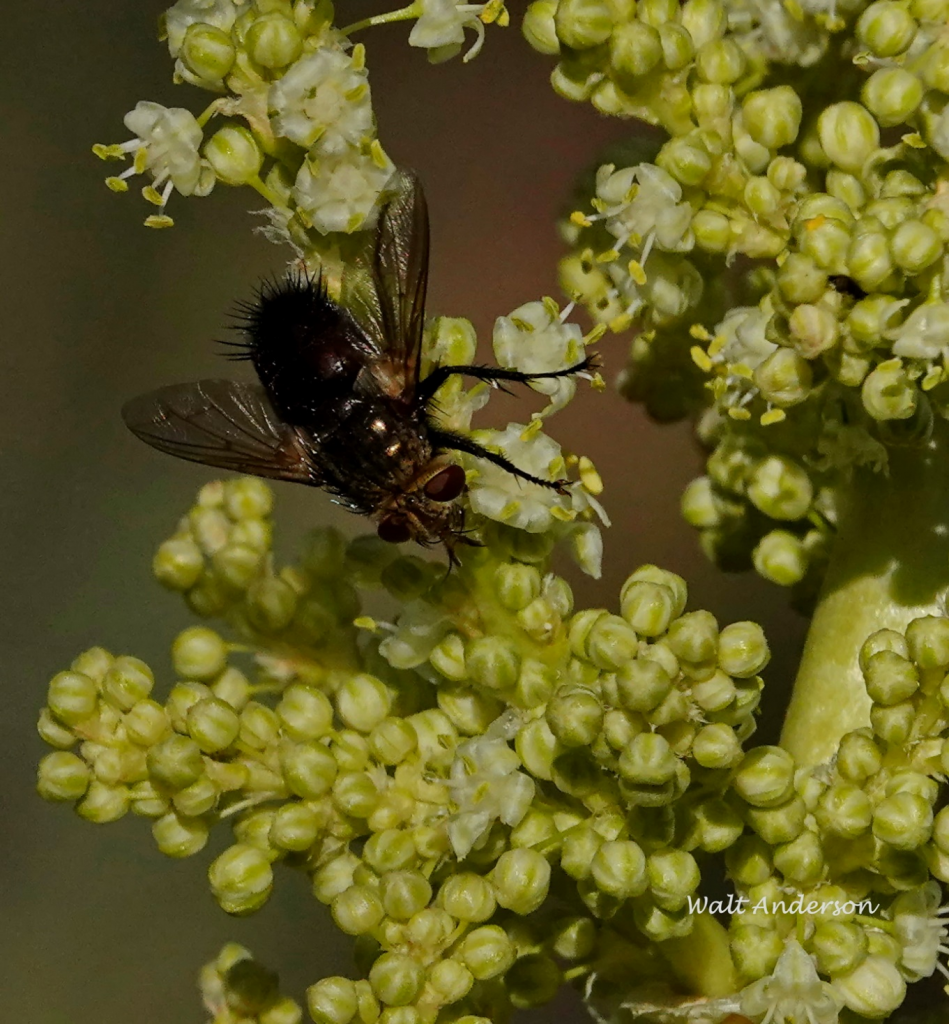
You can tell that nolina is a monocot because of the linear leaves and flower parts in threes or sixes, like those of a lily. Petals and sepals are not differentiated, so we call them “tepals.” You can clearly see the projecting pollen-bearing stamens here. This visitor is a tachinid fly, Voria ruralis, I believe. You often find them on flowers, but their main claim to fame is that their larvae parasitize moth larvae, often destructive ones like cabbage loopers, fall army worms, and variegated cutworms. Cabbage loopers, like little green inchworms, have been reported “damaging broccoli, cabbage, cauliflower, Chinese cabbage, collards, kale, mustard, radish, rutabaga, turnip, and watercress. Other vegetable crops injured include beet, cantaloupe, celery, cucumber, lima bean, lettuce, parsnip, pea, pepper, potato, snap bean, spinach, squash, sweet potato, tomato, and watermelon. Additional hosts are flower crops such as chrysanthemum, hollyhock, snapdragon, and sweetpea, and field crops such as cotton and tobacco.” Wow—bring on the tachinids! We often think of flies as villains, but here is a clear agricultural hero!
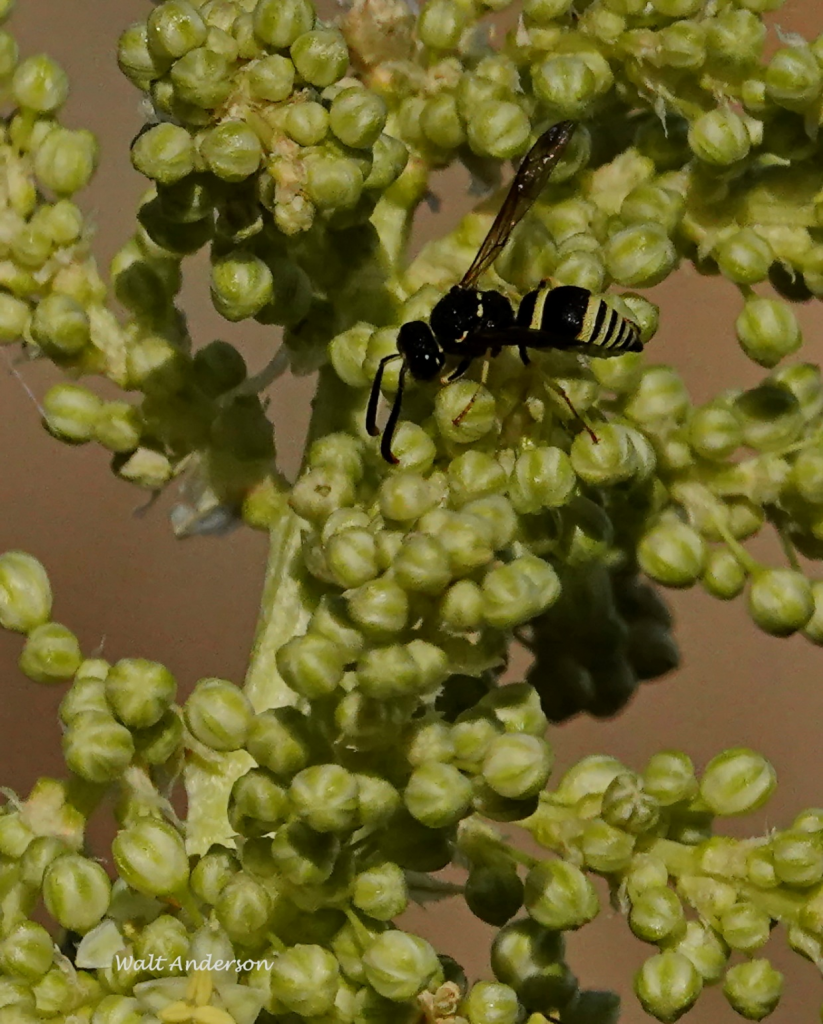
I love watching nolina flowers at this time of year. Here is a Philanthus wasp, commonly called a Beewolf (no, not Beowulf—that’s a different story). As its name implies, it terrorizes bees and other wasps, paralyzing them with its stinger and placing them in nest cells, where the larvae feed on the helpless stinging insects from inside. Just bee glad they aren’t three feet long and interested in us as hosts for their babies!

Clumps of nolina add structural diversity to the grasslands where pronghorns roam. I took this photo in February of 2011. Right now, this very piece of ground is covered with houses and roads. I am saddened that the integrity of our grasslands has not been considered in regional planning. Pronghorn habitat has been fragmented or outright destroyed with little effort to create wildlife corridors that would keep their populations viable. We name our subdivisions for them—Pronghorn Estates, for example. Why not be honest and call it Pronghorn-genocide Estates? The logo of Chino Valley features a handsome pronghorn. Smart development doesn’t preclude planning for wildlife; in fact, the public loves pronghorns and would be delighted to count them as neighbors if their representative governments planned wisely. The grasslands around the Quad Cities have been recognized as the best pronghorn habitat in the state. Is that something that we will be happy to read about in the history books once they are extirpated? An enlightened and active citizenry could change the trajectory. Are we up to it?

With a little luck, monsoon storms will soon sweep through our region, giving life to nolina and the countless other organisms that call grasslands home.

How fortunate we are to have some wide-open spaces, land that supports pronghorns, falcons, harriers, grassland sparrows, larks, coyotes, and even the occasional badger. Yet there are already plans to build thousands of homes on these grasslands. How many of them will even have the sensible forethought to feature nolina in water-wise landscaping? Will we foolishly pump the aquifers to the point where the Upper Verde River dies and private wells fail? Let’s not throw up our hands and concede that growth is inevitable (or essential, as the developers want us to believe). We need to elect and support people who understand that long-term sustainability is imperative. Grasslands must not become sacrifice zones. Native Americans recognized that the land is sacred, and we need to adopt that philosophy if we expect to have a livable planet in the future.
